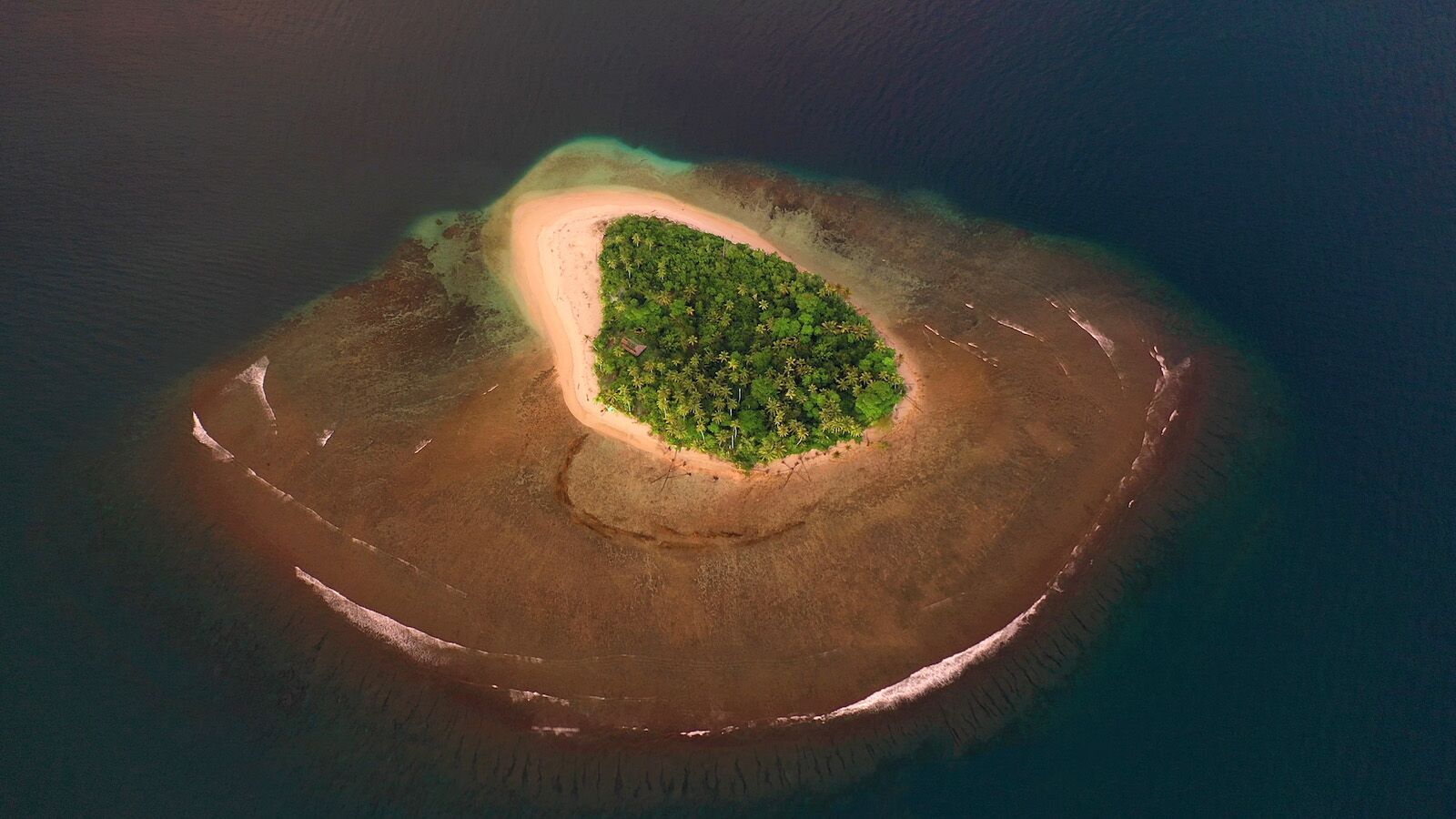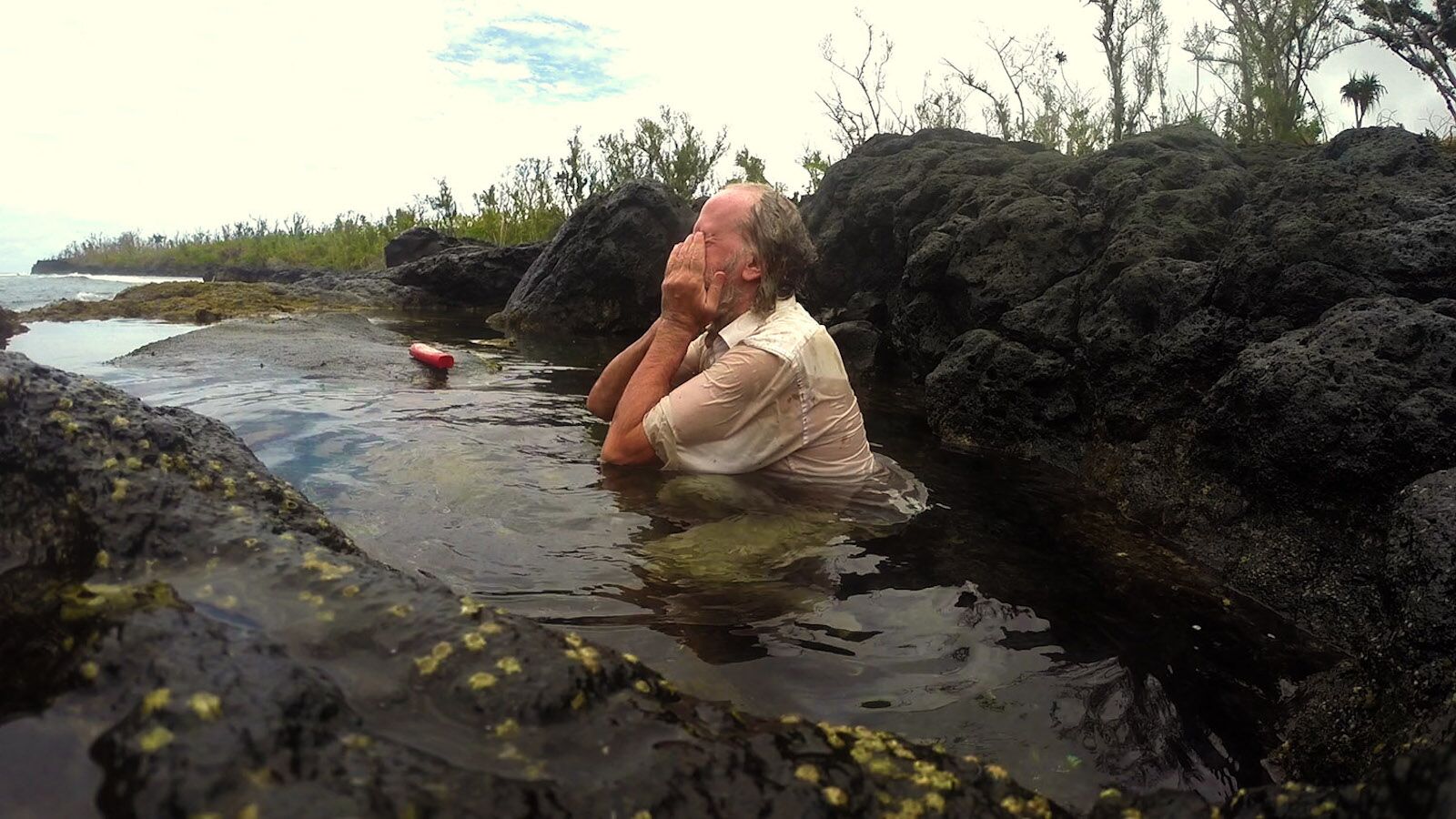If you’ve ever watched Survivor, you’ve probably tried putting yourself in the shoes of one of the castaways and asked yourself a few questions: could I make fire on a desert island? Could I forage for food? Could I handle the isolation? Would I stay sane without internet? Even if you answered yes to these questions, the reality of true isolation on a desert island is probably much different than you expect. Cracking open coconuts, hunting wild chickens, and building a shelter are much more difficult when life and death are on the line. And that’s the point. If surviving in a remote location were easy, accomplishing it wouldn’t be so rewarding.

Docastaway Lets You Live Out Your 'Survivor' Fantasy on a Desert Island
For all the would-be castaways out there, or anyone who simply wants to get off the grid, there’s a company that lets you live out all your Robinson Crusoe fantasies. Docastaway helps people escape civilization and live completely alone on a real desert island for a few days or weeks without the embarrassment of creating a Survivor audition tape.
The company offers two distinct experiences: Survival and Comfort. Those who sign up for the Survival experience can expect to be whisked off to a remote location and left to find their own food, build their own shelter, and navigate the area’s rugged terrain with no help whatsoever. This isn’t a family island vacation. Many who choose this option go completely solo for the true castaway experience. The Comfort option, by contrast, comes with more comfortable amenities. Depending on the destination, these could include showers, bungalows, and bedding, and you certainly won’t be foraging for your own food. Whichever experience you choose, you’re guaranteed to be completely alone and miles from the nearest tourist.
Rather than selling “survival” experiences, Docastaway is really selling a sense of isolation, explains Alvero Cezero, founder of Docastaway.
This interview has been edited for length and clarity.
Matador Network: Explain the concept behind Docastaway, and what inspired the idea
Alvero Cezero: When I was eight years old, I used to spend my summer holidays with my family in a fishing village near Malaga, Spain, where there are plenty of secret coves. I used to escape there with my own little floating raft (without my parents’ permission, of course), and on a little secret cove called Calaiza I experienced for the first time what it felt like to be a castaway.
When I was 19, I wanted to be a real castaway and set about finding help to fulfill my dream. I searched online (it was the beginning of the internet) but I didn’t find anything, anybody, any organization — nothing offered this unusual enterprise. Then, in 2003, I decided to do it myself and go on a real desert island for the first time on the remote archipelago of Andaman and Nicobar in India. From then on, I dedicated the rest of my youth to exploring untouched archipelagos in different continents. When I finished my university studies, knowing that it was impossible for me to spend the rest of my life working in an office, I did another search on Google but still there wasn’t any company offering castaway experiences. So as I was sure there were more people like me in the world, I decided to create Docastaway.

Photo: Docastaway
How do the two options (Survival and Comfort) work?
We have islands where there is nothing built that are perfect for those who wish to test their survival skills for a few days or weeks. We’ve also got desert islands where a hut or bungalow has been built, some of them with showers and even electricity. In both options the feeling of isolation is guaranteed, and in case of emergency we will go in for rescue in a few minutes or hours depending how far is the island from the nearest civilization.
What kinds of people typically sign up?
Forty percent of our clients are solo castaways, 40 percent are couples, and 20 percent are smaller groups of two or three friends. In Comfort Mode, 95 percent of the clients are couples. Our clients are from all over the world, but mainly from the United States, United Kingdom, Spain, Netherlands, Germany, and Switzerland. Ninety-five percent of our castaways are from North America and Europe.
What experience are they looking for that they can’t get anywhere else?
People are looking to be completely alone on a remote desert island. Achieving a feeling of true isolation is almost impossible these days, and we guarantee that feeling.
How do you identify locations that will be used in the experience?
An island is suitable if enough isolation can be achieved. It’s possible to find a good team to prepare the experiences, a local government that allows and supports our activities, and whoever owns or oversees the island to respect our contracts. We also prioritize convenient logistics and reasonable travel costs, so guests aren’t physically and financially drained upon arrival.
What do clients get on the Survival experience, and what must they do for themselves?
The Survival experience is normally for those who wish to test themselves, and they normally go solo. For many, it’s a once in a lifetime experience. Repeating clients typically choose a Comfort Mode Experience after a Survival Mode.
Survival castaways need to forage for their own food (mainly coconuts, crabs, and fish) and make their own shelter to cover from the rain. Most of them choose to bring a machete with them and also lighters. They sometimes bring backup drinking water so they can feel more secure. But a few of them decide to go with nothing, and in case they cannot handle it they can call us and we visit them to bring new tools or supplies.

Photo: Docastaway
Is the Survival experience usually what clients expect, or is it tougher?
Surviving on a tropical island is not too difficult, especially when you only go for a few days. Tropical desert islands can have plenty of food and liquids. Moreover, our body can survive without water or food for that time. But we did have clients in the past who struggled — especially for those who don’t have much resilience. They call us and we go to take them back to civilization earlier.
Any horror stories of people quitting early?
Luckily we haven’t really had any horror stories. But we did have many people quitting before their last day. For example, we have two Canadian guys who got so scared to see a snake in the entrance of their tent in the middle of the night when they wanted to go out to urinate that they called us asking for a rescue and they didn’t come up from their tent until we were there.
Some clients got seriously sunburnt and they wanted to come back. Others got stomach problems. Others got trapped on a rock while fishing during high tide. Other clients just got too scared or lonely of never ending nights in the dark. Others got too hungry.

Photo: Docastaway
How do you keep people safe, while also giving them enough space to go it alone?
Clients are fully responsible for anything that happens during their stay. They are aware of the risks and they know that they are completely alone. We only commit to go for rescue in a certain amount of time depending on the island.